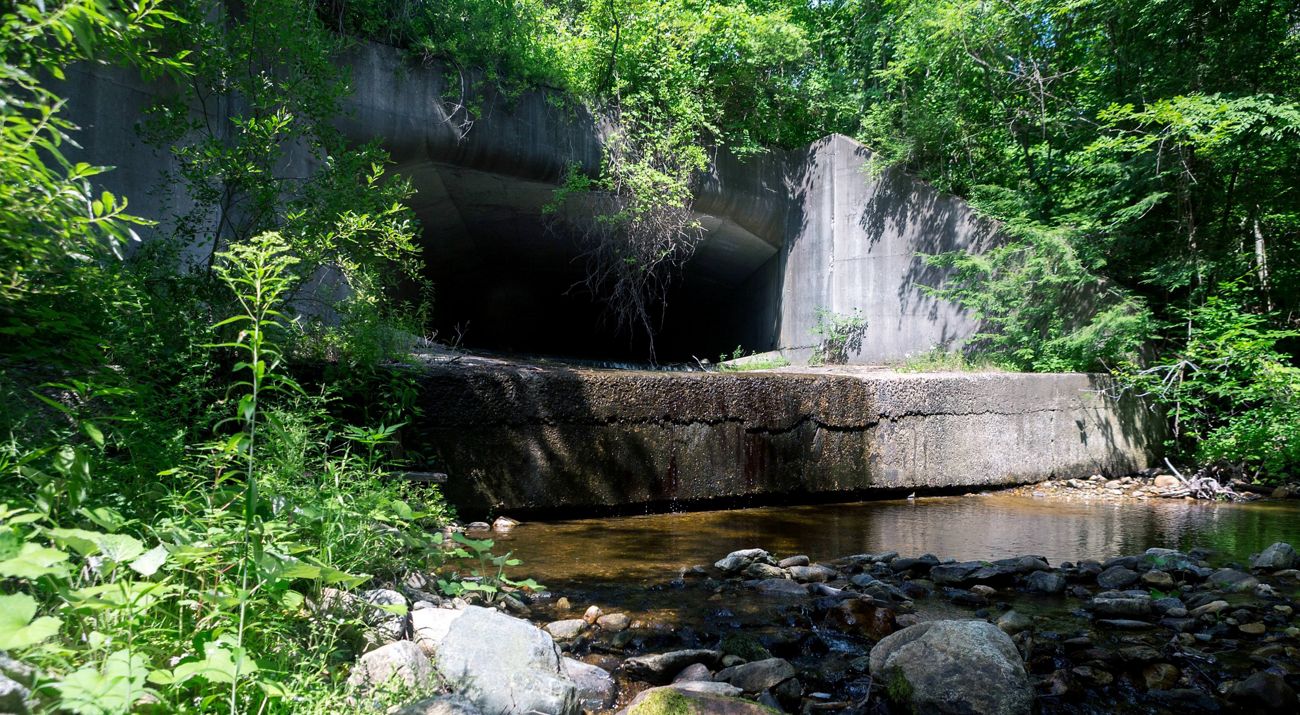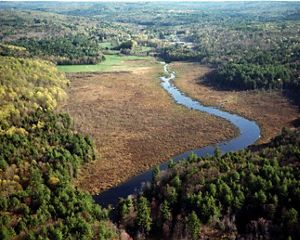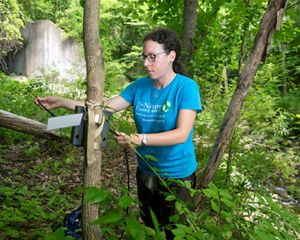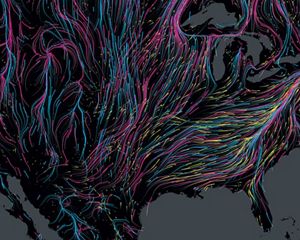How Does the Bobcat Cross the Mass Pike
Restoring wildlife connections across Western Massachusetts to sustain biodiversity
Culverts Act as Wildlife Tunnels
Pushing through thickets of trees and winding down a rock-strewn hillside is the only way to reach the entrance of a culvert that runs underneath the Massachusetts Turnpike in Lee. Laura Marx, The Nature Conservancy’s climate solutions scientist in Massachusetts, leads the way. It's the summer of 2018 and she is studying wildlife movement around the Pike in partnership with the Massachusetts Department of Transportation (DOT).
Obscured from the view of passing cars, culverts provide a path for water to flow underneath a road. Some have become important thoroughfares in the often-hidden world of wildlife movement.
Surveying Culverts to Understand Animal Movements
Both a stream and dry ground run through a culvert in Lee, a rectangular-shaped concrete tunnel about the width of a two-car garage. When visiting culverts, Marx checks the wildlife cameras mounted on or near them to download the photos they capture—one element of the data collected as part of the project. With the help of volunteers from partner organizations and DOT, she used the cameras and took visual observations to survey 30 sites where wildlife could travel under Interstate 90.
“The goal is to determine how much of a barrier the Pike presents to animals attempting to cross, and what can be done to maintain the passageways culverts provide,” says Marx.
Quote: Laura Marx
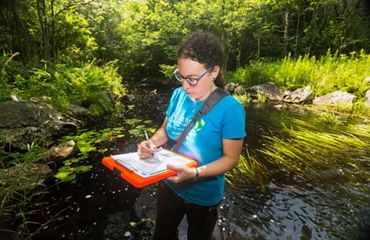
Especially given the effects of climate change on habitat, we want to help species move to new and more favorable environments.
The data gathered are added to a DOT database. Culverts that have the right characteristics for animal passage and show signs of use are flagged permanently. Contractors can then use this information to direct future roadway development and repairs in a way that maximizes animals’ ability to access suitable habitats, preventing critical wildlife pathways from being severed.
Better information about culverts and how animals use them also can be used to help make decisions about land protection. Wildlife need the freedom to move about in search of food, mates and places to raise offspring. Without good habitat on either side, even the best culvert can be a “bridge to nowhere.”
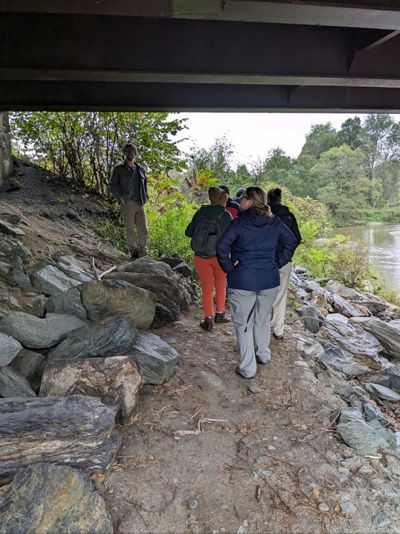
Protecting and Connecting Habitats
TNC and partners have been working together for the last decade to increase and support the protection of important habitats that link the Green Mountains in Vermont to the Hudson Highlands in New York, a geography known as the Berkshire Wildlife Linkage. Founded in 2014, the Berkshire Wildlife Linkage Partnership has gathered data on where and how wildlife move, and what both people and nature need in the Linkage. The Linkage is also a key part of a bi-national, public-private partnership called The Staying Connected Initiative.
“Especially given the effects of climate change on habitat, we want to help species move to new and more favorable environments,” says Marx. “Protecting lands on either side of culverts that allow wildlife passage can help.”
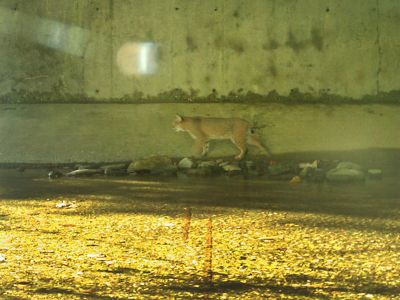
Plus, when animals have the option to pass beneath the Pike, fewer individuals attempt to cross traffic to get to the other side. Roadkill incidents decrease, improving both human and wildlife safety. Culverts that are wide enough for even our largest mammals can usually also handle significant amounts of stormwater, protecting the road above from storm damage.
After pulling photos from the wildlife cameras, Marx scrolls through the images on her iPad. They show a variety of species checking out the tunnel. Two bears, a coyote and a few deer—all proof that this seemingly innocuous path under the Pike is more than meets the eye.

Sign Up for Our E-Newsletter
Get updates on initiatives like this and many others in a monthly email. Check out a sample Nature News email.
